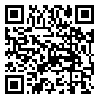Volume 13, Issue 49 (Water and Soil Science 2009)
jwss 2009, 13(49): 141-150 |
Back to browse issues page
Download citation:
BibTeX | RIS | EndNote | Medlars | ProCite | Reference Manager | RefWorks
Send citation to:



BibTeX | RIS | EndNote | Medlars | ProCite | Reference Manager | RefWorks
Send citation to:
Soffianian A, Maleki najafabadi S, Rahdari V. Quantifying Landscape Pattern Using RS & GIS Techniques for Mooteh Wildlife Refuge. jwss 2009; 13 (49) :141-150
URL: http://jstnar.iut.ac.ir/article-1-987-en.html
URL: http://jstnar.iut.ac.ir/article-1-987-en.html
, soffianian@ac.iut.ir
Abstract: (27829 Views)
Landscape ecology as a modern interdisciplinary science offers new concepts, theories, and methods for land evaluation and management. One main part of landscape ecology is describing patterns in the landscape and interpreting the ecological effects of these patterns on flora, fauna, flow of energy and materials. Landscape studies require methods to identify and quantify spatial patterns of landscape. Quantification of spatial patterns is essential to understand landscape functions and processes. Landscape indices as diversity and naturalness can provide quantitative information about landscape pattern. Remote sensing and GIS techniques have high ability for landscape researchers to specify, map and analyze landscape patterns. The objectives of the research include mapping and quantifing diversity and naturalness indices for Mooteh wildlife refuge by land use/land cover map derived from remote sensing images. Finally, diversity and naturalness were classified in 4 and 6 classes, respectively. Results showed that the intermediate and high diversity classes (class 1 & 2) have occupied the largest area in the study area. Among naturalness classes, class 1 which represents the high level of naturalness has taken the largest area in Mooteh W.R.
| Rights and permissions | |
 |
This work is licensed under a Creative Commons Attribution-NonCommercial 4.0 International License. |





